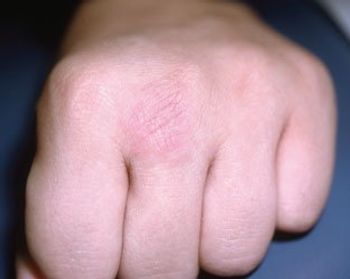
A 9-month-old white boy was brought to the emergency department (ED) after he had been crying inconsolably for 2 hours. The parents thought the crying was related to the child's left leg, which they felt "did not look right." Two weeks earlier, the boy had a similar episode of inconsolable crying, and a fracture of the right distal radius was diagnosed. The fracture was presumptively caused by entrapment of his arm in the crib railings.


